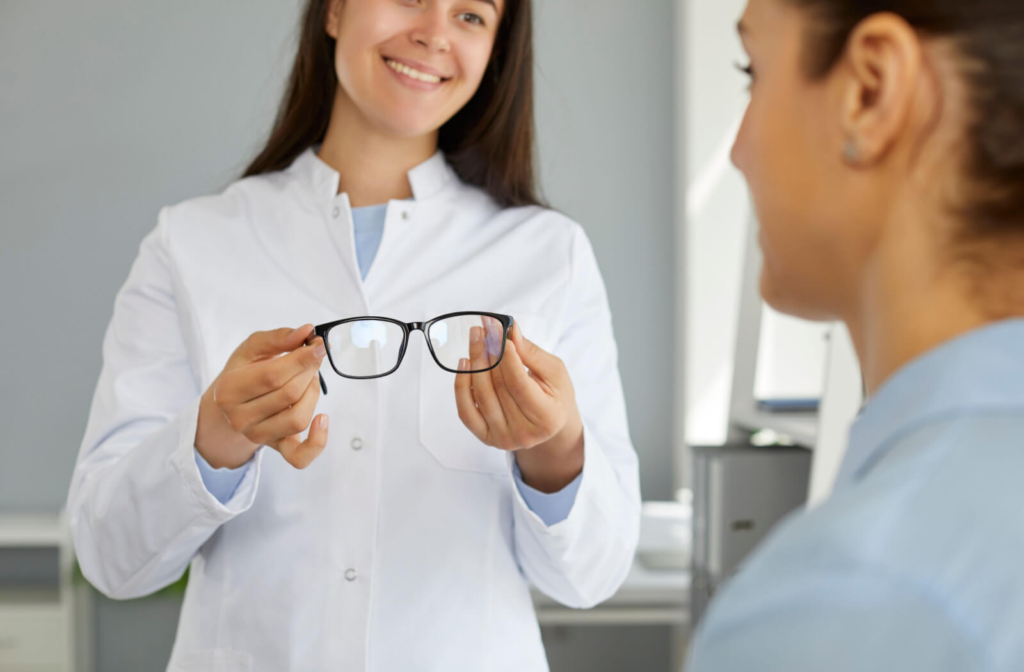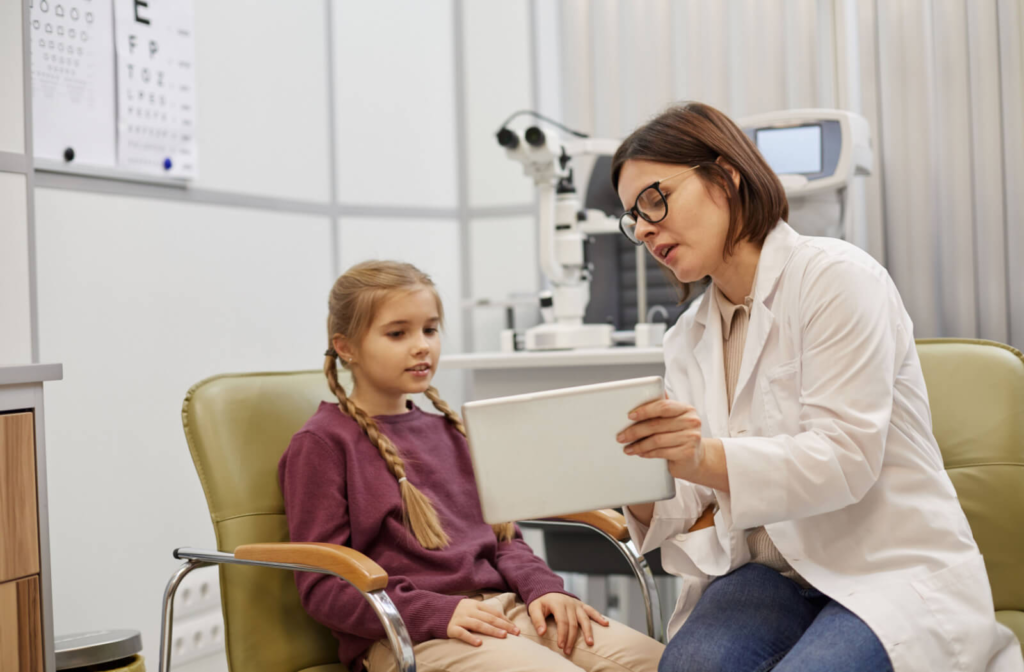Most eye diseases or eye conditions can benefit from prompt diagnosis and treatment. Lazy eye, or amblyopia, is no different.
Amblyopia typically develops early in life, and research demonstrates that treatment is usually most effective in childhood. But technically, lazy eye can be treated at any time throughout a person’s life.
Many optometrists and the American Optometric Association (AOA) agree that children should receive at least one eye exam between the ages of 3 and 5. During this exam, your optometrist can look for signs of amblyopia.
If they detect any signs, they may recommend more comprehensive testing to confirm. Early diagnosis and treatment can maximize the chances of correcting the eye problem before it causes vision issues in the child’s life.
What Is Lazy Eye?
Your brain and your eyes are constantly communicating and turning everything you see into recognizable shapes and colors. Amblyopia is a vision problem where 1 eye (or both, in rare cases) stops communicating correctly with the brain, and they don’t work together.
This results in the brain ignoring vision signals from that eye. Over time, the brain relies on the stronger eye, and the affected eye’s vision gets worse. It’s important to note that the term “lazy eye” stems from one eye working harder than the other, but the person with amblyopia has zero control over how their eye works.
Symptoms of Lazy Eye
Sometimes a baby is born with amblyopia, but other times it develops as the child matures. A child’s poor depth perception is often one of the first things a parent might notice. Other potential signs may include:
- Closing 1 eye
- Squinting
- Constantly turning or tilting the head a certain way
- Eyes not moving in the same direction when the child is attempting to focus
Types of Lazy Eye
There are a few types of amblyopia to know: refractive, strabismic, and deprivation.
Refractive Amblyopia
An uncorrected refractive error, such as farsightedness or myopia, is a common cause of amblyopia. When one of these refractive errors is left uncorrected, the result can be that one eye must work harder to compensate for the visual difference.
Strabismic Amblyopia
A muscle imbalance between the eyes can lead to strabismic amblyopia. In a pair of normal eyes, the 2 of them work as a pair. But when a child has strabismus, the muscles that control the eyes don’t work together, causing the eyes to cross or turn up, down, or away from each other.
Deprivation Amblyopia
Deprivation amblyopia is the rarest form of the condition affecting less than 3% of all cases. It typically develops when a secondary condition, like a cataract, blocks light from passing through the eye. This prevents the retina from forming a clear image, weakening the eye.
When Is It Too Late to Treat Lazy Eye?
Studies by the National Eye Institute indicate that treatment of amblyopia can benefit children between the ages of 7 and 17. There hasn’t been a lot of research done on the effectiveness of treatment in adults, which is a significant reason children need to see their eye doctor as recommended by AOA.

Treatment Options for Lazy Eye
There isn’t a single best option for treating amblyopia. Factors such as age or severity of the condition affect which therapy your eye doctor recommends. The following 4 treatments could be options for treating your or your child’s amblyopia.
Vision Therapy
A lack of proper communication between the brain and the lazy eye is a significant cause of amblyopia, as we saw in the various types of the condition above, especially in strabismic amblyopia.
Vision therapy is a combination of activities or exercises that your eye doctor can use to help strengthen the connection between the brain and the eye. At Perspective Eye Center, Dr. Erin Knoerzer considers each patient’s vision needs to design a unique vision therapy curriculum.
Glasses
With refractive errors being the most common cause of amblyopia, it’s no wonder that eyeglasses can play a significant role in its treatment. If your eye doctor determines that a refractive error is the root of amblyopia, they can adjust your or your child’s prescription accordingly.
For example, when 1 eye is significantly weaker, your optometrist may recommend a much stronger prescription in that eye versus a weaker prescription in the other. The goal of reversing the balance of vision is to strengthen the weaker eye.
Eye Patch
Eye patches are another relatively common way your doctor can treat amblyopia. A patch works similarly to correcting a refractive error. The optometrist places the eye patch over the strong eye, which forces the weaker eye to work and hopefully improve.
Depending on the severity of the condition, certain patients may only need to wear the patch for a few hours per day. Whereas others may need to wear it more often.
Medicated Eye Drops
You may be familiar with atropine eye drops. They are commonly used in diabetic eye exams to dilate the pupils, and many optometrists use them for myopia control.
Low-dose atropine eye drops also work as an amblyopia treatment. Placing the drops in the strong eye temporarily paralyzes the muscle that causes your eye to focus. This causes the vision to blur in the good eye, which may help increase the weaker eye’s effectiveness by strengthening its muscles.
Discuss Vision Improvement with Your Eye Doctor
If you’re noticing any of the signs we discussed above in your child, seeing your eye doctor is essential. The earlier your eye doctor can diagnose and begin treatment of amblyopia, the better. But it’s possible that amblyopia isn’t the problem, and perhaps they just need glasses—which can lower the risk of amblyopia from developing.
And if you’re an adult who never had amblyopia treated and assumed there was no hope, come see us at Perspective Eye Center. One of our experienced optometrists can examine your eyes and review your treatment options.



